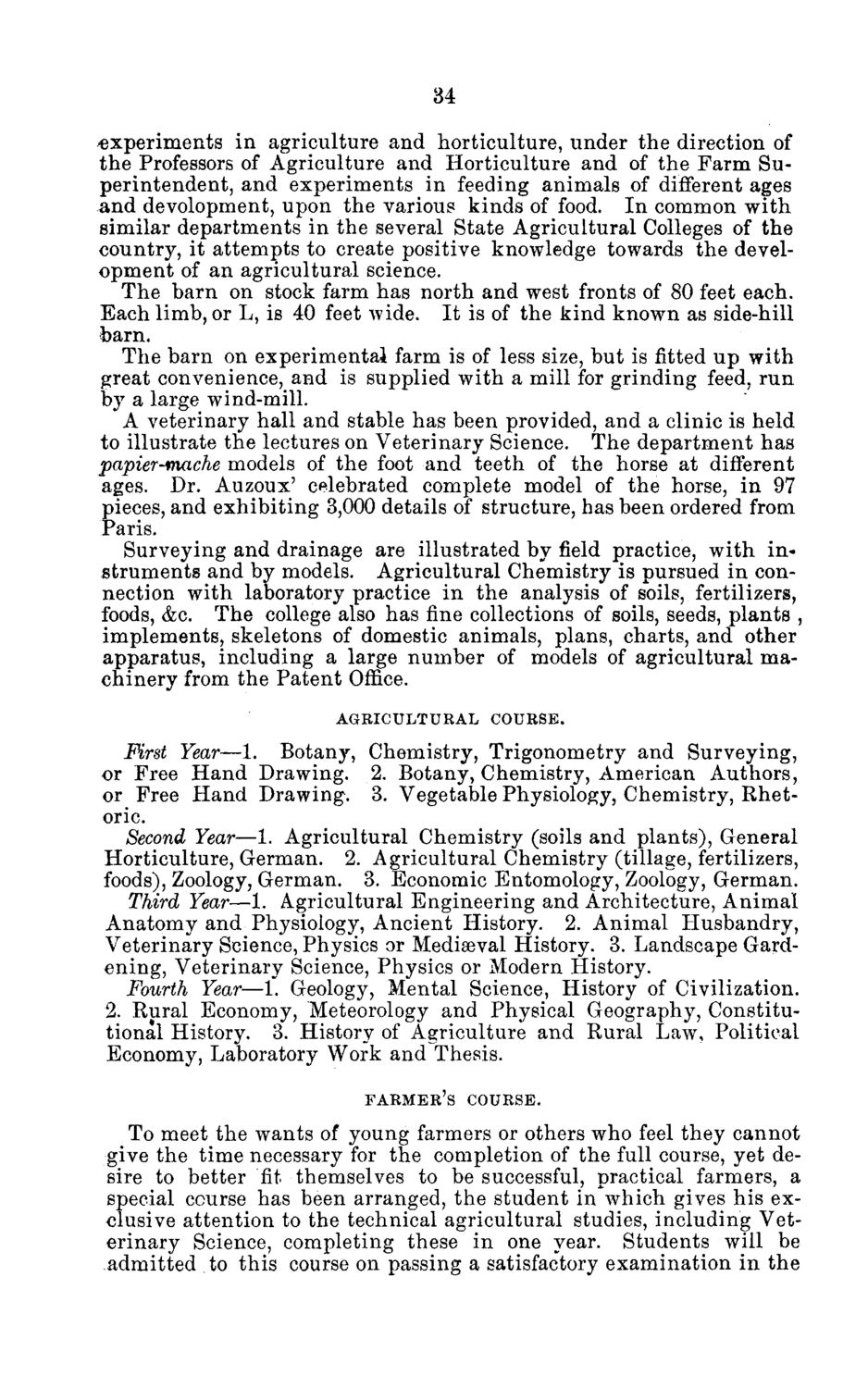| |
| |
Caption: Board of Trustees Minutes - 1876
This is a reduced-resolution page image for fast online browsing.

EXTRACTED TEXT FROM PAGE:
34 experiments in agriculture and horticulture, under the direction of the Professors of Agriculture and Horticulture and of the Farm Superintendent, and experiments in feeding animals of different ages and devolopment, upon the various kinds of food. In common with similar departments in the several State Agricultural Colleges of the country, it attempts to create positive knowledge towards the development of an agricultural science. The barn on stock farm has north and west fronts of 80 feet each. Each limb, or L, is 40 feet wide. It is of the kind known as side-hill barn. The barn on experimental farm is of less size, but is fitted up with great convenience, and is supplied with a mill for grinding feed, run by a large wind-mill. A veterinary hall and stable has been provided, and a clinic is held to illustrate the lectures on Veterinary Science. The department has papier-mache models of the foot and teeth of the horse at different ages. Dr. Auzoux' celebrated complete model of the horse, in 97 pieces, and exhibiting 3,000 details of structure, has been ordered from Paris. Surveying and drainage are illustrated by field practice, with instruments and by models. Agricultural Chemistry is pursued in connection with laboratory practice in the analysis of soils, fertilizers, foods, &c. The college also has fine collections of soils, seeds, plants , implements, skeletons of domestic animals, plans, charts, and other apparatus, including a large number of models of agricultural machinery from the Patent Office. AGRICULTURAL COURSE. First Year—1. Botany, Chemistry, Trigonometry and Surveying, or Free Hand Drawing. 2. Botany, Chemistry, American Authors, or Free Hand Drawing. 3. Vegetable Physiology, Chemistry, Rhetoric. Second Year—1. Agricultural Chemistry (soils and plants), General Horticulture, German. 2. Agricultural Chemistry (tillage, fertilizers, foods), Zoology, German. 3. Economic Entomology, Zoology, German. Third Year—1. Agricultural Engineering and Architecture, Animal Anatomy and Physiology, Ancient History. 2. Animal Husbandry, Veterinary Science, Physics or Mediaeval History. 3. Landscape Gardening, Veterinary Science, Physics or Modern History. Fourth Year—1. Geology, Mental Science, History of Civilization. 2. Rural Economy, Meteorology and Physical Geography, Constitutional History. 3. History of Agriculture and Rural Law, Political Economy, Laboratory Work and Thesis. FARMER'S COURSE. To meet the wants of young farmers or others who feel they cannot give the time necessary for the completion of the full course, yet desire to better "fit. themselves to be successful, practical farmers, a special course has been arranged, the student in which gives his exolusive attention to the technical agricultural studies, including Veterinary Science, completing these in one year. Students will be admitted to this course on passing a satisfactory examination in the
| |